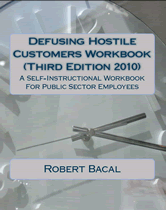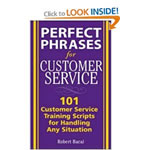
How to do really unboring presentations
How Attention Works For Audiences
First of all, getting and keeping an audience's attention is probably the most important thing that a presenter must be able to do. There are other things that are important, but if the audience members are daydreaming or not listening, they just aren't going to hear you. In addition, bored audiences are noisier, and are more distracting to the presenter since they tend to talk amongst themselves, shuffle paper, get up and leave.You don't have to be a psychologist to understand how attention works, since the principles can be summarized quite easily. Once you know the basic principles, you can modify your presenting behaviour to ENHANCE interest and attention. We will get to the actual attention getting techniques later. Right now we need to understand the principles.
1. Relevance
People will pay very close attention to something they perceive as having relevance to their own lives and concerns. This is pretty obvious, really. Unfortunately, check out #2 below.
2. Importance of Highlighting/Linking
People often will not see the relevance of what is being said without the implications being teased out for them, and highlighted. In other words, you may be presenting something that the audience should be seeing as relevant, or important, but they don't see it as such. You need to highlight by linking the fact or piece of information to the benefit it relates to. You need to explain the significance of what you are saying.
3. Change
People have
difficulty attending to anything that does not change or is relatively
constant or repetitive. eg. We learn to tune out unchanging
sound such as air conditioning, although we will notice when it
goes OFF. That's why a monotone voice is so boring, or why
it is more difficult to pay attention to a presenter at a podium
than to one who is moving around (generally).
4. Controlled Change
The key element in generating human attention is introducing controlled change in the environment. It is the presenter's role to change things up....use AV, move, change voice tone, speed, etc. This conveys enthusiasm.
5. Distractors
People may pay attention to things that are irrelevant or trivial, since many people have trouble identifying key points or issues.
People will be distracted by little things that are out of the ordinary (try leaving your zipper undone or jiggling your keys). They also will miss key points unless you help them.
Applications
Based on these attentional principles we can make the following suggestions for presenters.
1. Within the first five minutes of any presentation, the presenter must create the idea that what will be said is of relevance to the audience. It is important that the presenter understand the concerns of the audience with respect to the topic and address them early. Always establish relevance from the point of view of the audience!
2. Even in
the shortest presentation, the presenter "sends" a lot of nformation.
The audience will only retain a portion of that information, so
it is important that they retain the major points, not tangential
details. Presenters can help the audience focus on the key points
through verbal emphasis (tone, loudness, silence), use of overheads
and flipcharts for KEY points, etc.
3. It is difficult for an audience to pay attention for extended periods of time PROVIDED that there is little change in the speaker's behaviour. The worst tactic is to stand still, and talk in a monotonous drone, or showing slide after slide, or overhead after overhead. An expert presenter, using change elements, can keep attention for very long periods of time by using him/her self as a changing focal point for attention. This means using:
- movement
- gestures
- variations in voice tone, volume
- strategic silence
- colourful picturesque language
- varying distance from audience
- varying speed of speech
- strategic use of audio-visual material
- avoiding repetition in format





